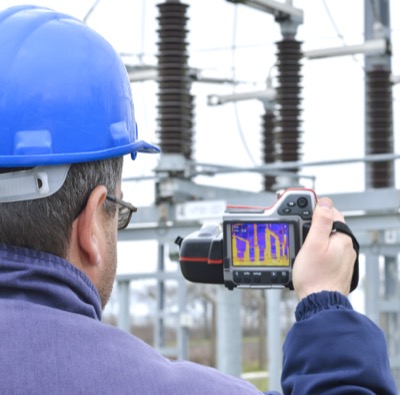Temperature Rise as a Severity Indicator
Sponsored by:

Tip written by: Infraspection Institute
For years, many thermographers have sought to qualify the severity of detected exceptions by measuring temperature rise. Although this technique is widely practiced, failure to understand key issues can lead to misdiagnoses and unplanned downtime.

For over 30 years, thermographers have frequently attempted to qualify the severity of detected exceptions by comparing the temperature of the exception to similar components under similar load or to ambient air temperature. Although qualifying exception severity may be desirable for maintenance planning, it also involves a certain degree of risk management as some exceptions may rapidly deteriorate and lead to an unplanned outage.
To better understand the risks associated with assigning severity to exceptions based upon temperature, it is important to keep the following in mind:
- For highly reflective targets, small emissivity errors can cause significant infrared temperature measurement errors
- Infrared temperatures are subject to errors due to spot measurement size
- The source of an exception may be contained within a device prohibiting direct measurement at the point of origin
- IR temperature measurement is subject to significant errors due to atmospheric conditions such as wind, solar gain, and moisture
- The temperature of electrical exceptions can increase dramatically and without warning if arcing should occur
- Qualifying exception severity based upon temperature does not consider the potential impact of an unplanned failure
At present, there is no scientific method for accurately predicting time to failure based upon operating temperatures of electrical or mechanical components. In order to reduce the likelihood of an unplanned failure, every exception detected should be investigated for cause and properly repaired as soon as possible.

